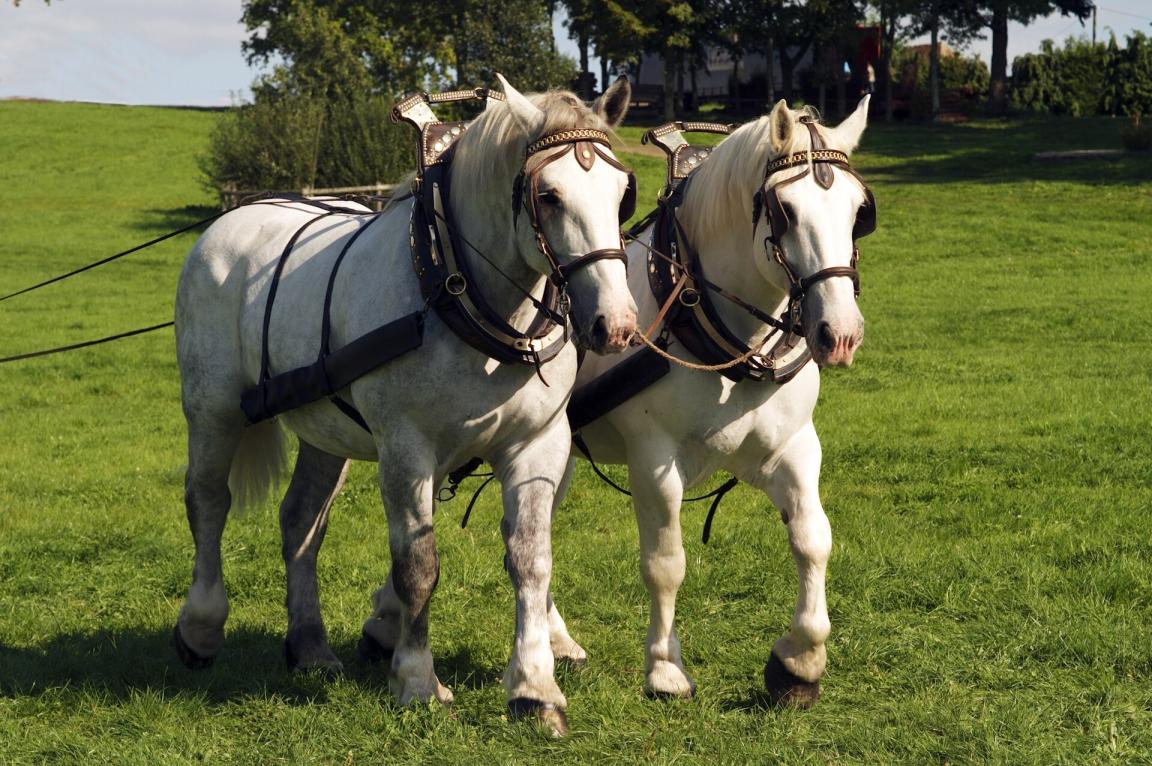
Continent: Europe
Country: France
Weight: 700 – 1000 kg
Height: 155 – 185 cm
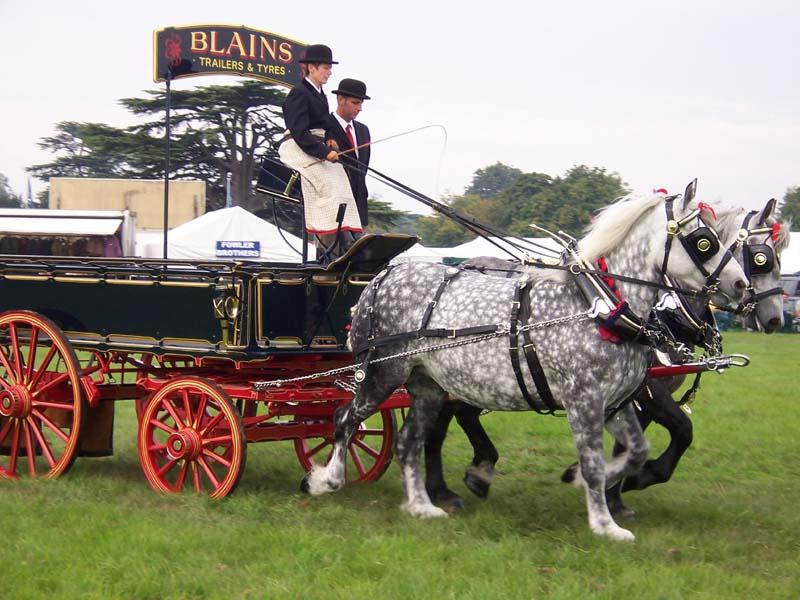
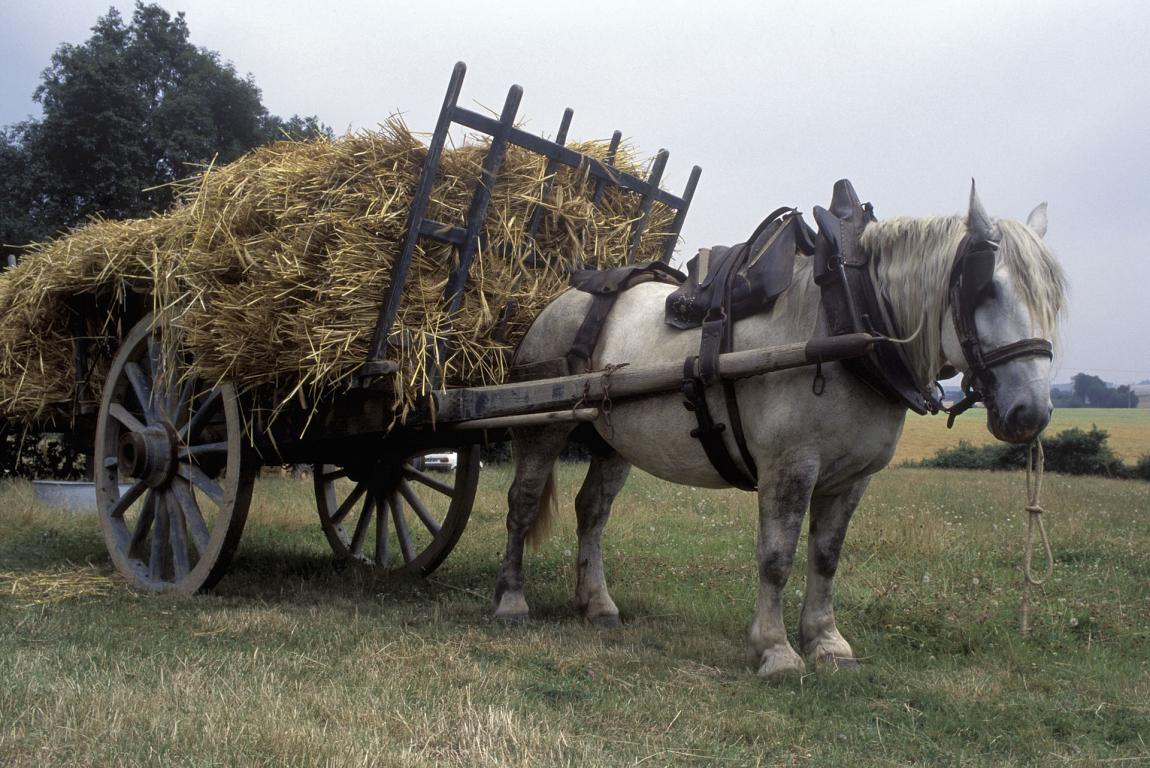
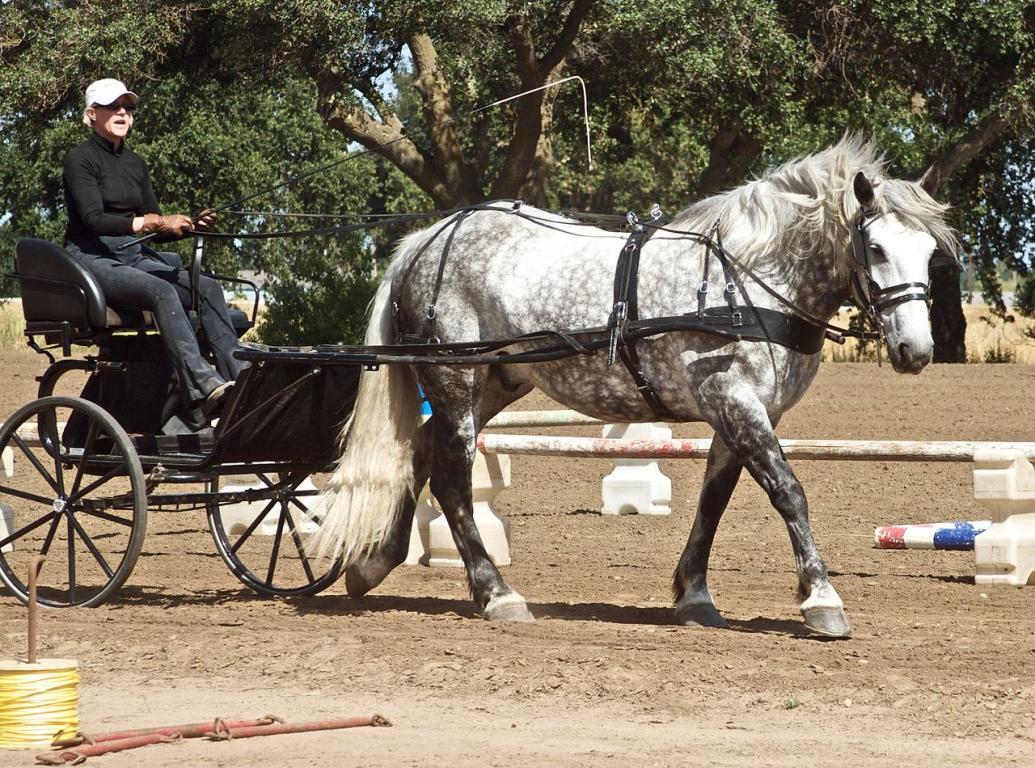
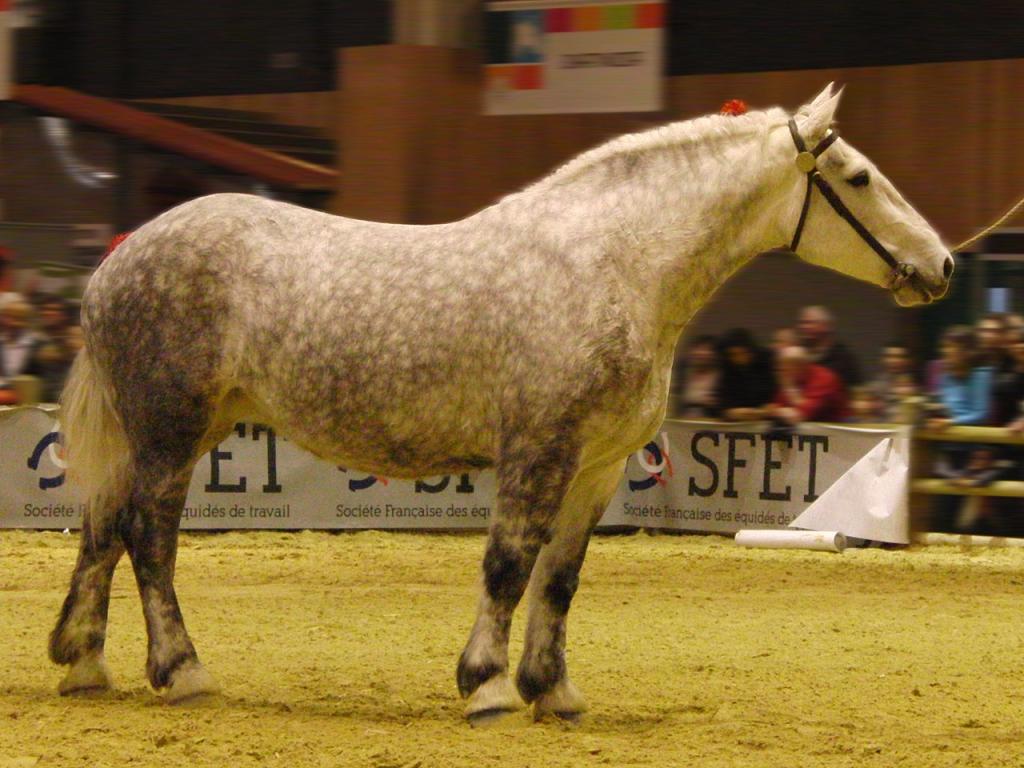
The Percheron originates from the Perche, a natural region located between Normandy and the Loire in France, known for its rolling landscapes and fertile lands. This draft horse breed has been developed since the Middle Ages through rigorous selection. Local breeders crossed rustic local horses with Arabian stallions, bringing finesse and endurance, as well as with heavy and powerful Norman horses, to produce a horse that is both powerful, robust, and versatile.
Recognized for its exceptional strength, the Percheron also stands out for its natural elegance and noble appearance, qualities that have earned it international fame. This horse has traditionally been used for heavy agricultural work, logging, as well as for harness driving and equestrian shows where its presence is impressive.
The breed thus combines physical robustness with a gentle temperament, making it a reliable work partner but also a horse appreciated for leisure riding and equestrian tourism. Today, the Percheron remains an iconic symbol of French equestrian heritage, with a strong presence in many countries thanks to its adaptability and exceptional qualities.
The Percheron is mainly bred in its region of origin, the Perche, located between Normandy and the Loire in France. This area, characterized by fertile lands and a temperate climate, offers an ideal environment for breeding robust draft horses adapted to agricultural work.
Beyond the Perche, breeding also extends to other French regions such as Normandy, Brittany, Poitou, and Centre-Val de Loire, where agricultural conditions still favor the use of the Percheron for rural work and harness driving.
Internationally, the breed is well established in North America, notably in the United States and Canada, where it is valued both for logging work and for leisure and shows. Other European countries like Germany, Belgium, and the Netherlands also have significant breeding populations.
The Percheron’s ability to adapt to varied climates and different types of work contributes to the sustainability and spread of the breed across many breeding zones, making it an indispensable draft horse breed.
The Percheron breed holds a major genetic importance in the world of draft horses due to its genetic diversity, robustness, and versatile qualities. It plays a key role in the preservation and improvement of traits specific to heavy draft horses, notably muscular strength, bone solidity, and a calm yet willing temperament.
Thanks to rigorous selection and a well-established stud book, the Percheron has helped maintain a stable genetic heritage, while avoiding the genetic impoverishment that threatens some draft breeds. This genetic diversity is essential to combat hereditary diseases and ensure good longevity and fertility in the population.
The Percheron is also used in crossbreeding with other breeds to pass on its physical qualities and temperament, contributing to the creation or improvement of lighter workhorses, driving horses, or even robust leisure horses.
Thus, the Percheron is an essential genetic pillar for breeding, conservation, and innovation in the field of draft horses, both in France and internationally.
The Percheron is a draft horse breed whose origins date back to the Middle Ages in the Perche region, located between Normandy and the Loire in France. Since the 12th century, horses from this area were renowned for their robustness and versatility, used for agricultural work, transport, and war.
Over the centuries, the breed developed through the crossing of local horses with imported Arabian stallions, bringing lightness and endurance, as well as with heavy Norman horses, enhancing strength and power. This mixture resulted in a horse that is simultaneously strong, enduring, and elegant.
The Percheron stud book was officially created in 1883, helping to standardize and promote the breed. In the 19th century, the Percheron became one of the most popular draft horses in France, recognized for its aptitude in agricultural work, harness driving, and heavy transport.
During the 20th century, with agricultural mechanization, the breed experienced a decline but survived thanks to its appreciation in leisure activities, equestrian tourism, and shows. Its elegance and calm temperament made it popular well beyond French borders, notably in North America.
Today, the Percheron remains a symbol of French equestrian heritage, combining tradition and modernity, and continues to be bred in many countries worldwide.
The Percheron is renowned for its calm, gentle, and steady temperament, qualities that make it a highly appreciated draft horse. It shows great patience and natural obedience, which facilitates its training and use in work, even under demanding conditions.
This breed is also recognized for its alertness and intelligence, allowing it to quickly adapt to new situations while remaining composed. Its courage and willingness to work are major assets, especially during prolonged efforts or heavy tasks.
The Percheron also stands out for its attachment to humans: it is often very sociable, affectionate, and seeks contact, making it an excellent companion both for work and leisure.
Finally, despite its imposing size and strength, it is remarkably gentle, avoiding aggressiveness, which makes it particularly suitable for family or educational environments.
The Percheron breed is currently experiencing a renewed interest, driven by the growing appreciation of sustainable agriculture and ecological work, where draft horses are regaining a privileged place. Thanks to its robustness and versatility, the Percheron is expected to play an important role in these new approaches, notably for logging in sensitive areas, viticulture, and the ecological maintenance of natural spaces.
Moreover, the Percheron’s popularity in equestrian leisure, prestigious driving, and live shows helps to preserve and revitalize the breed. Breeders are focusing on the continuous improvement of temperament and conformation, combining strength and elegance to meet market demands.
The increased use of modern genetic selection techniques and the rigorous management of the stud book also allow for the preservation of genetic diversity while promoting disease resistance.
Finally, the Percheron breed could see its breeding area expand, especially in countries where draft horses have historically been less common, due to the growing demand for alternatives to machinery in agriculture and green spaces.
The Percheron is generally a robust breed with good longevity, benefiting from a solid constitution suited to heavy work.
However, like many draft horses, it has certain predispositions and specific sensitivities that require monitoring:
-Tendinitis and joint problems: Due to its considerable weight, the Percheron can be prone to strain on tendons and joints, especially in the limbs, particularly if overworked or poorly shod.
-Laminitis: This inflammatory hoof disease can occur with an overly rich or unbalanced diet, or overweight. Careful ration management is therefore essential.
-Hereditary diseases: Although rigorous selection limits their occurrence, some cases of hereditary myopathies or muscular disorders have been identified in heavy horse bloodlines.
-Respiratory problems: Sometimes sensitive to respiratory ailments related to dust in agricultural environments or poorly ventilated stables.
-Dietary caution: Its tendency to gain weight easily requires appropriate nutritional monitoring to avoid obesity and its consequences.
In general, good exercise management, a balanced diet, and regular veterinary care help the Percheron stay healthy throughout its life.
A natural, regular, and expansive gait, the Percheron’s walk is steady and rhythmic, suited to a powerful draft horse. It moves with good amplitude while maintaining a certain slowness due to its mass.
The Percheron’s trot is energetic and balanced, with pronounced impulsion despite the horse’s considerable weight. It maintains a good rhythm and great stability.
The canter is less frequent in draft horses, but the Percheron can display a supple and powerful gait at this speed, especially over short distances.
Born on 04/15/2005
Award-winning Percheron in driving and work competitions, known for his strength and exemplary temperament.
Born on 07/22/2010
Famous show mare at French equestrian fairs, remarkable for her presence and elegance.
Born on 03/01/2012
Used in ecological logging demonstrations, showcasing the power and versatility of the Percheron.

For centuries, Percherons were perceived as animals only good for agricultural work. The mechanization of agriculture marked their decline, then that of horse butchering, their extinction. The return of the draft horse, more ecological and more economical, allows us to place the future in a sustainable development approach.
![[DISCOVERY] The Percheron](https://img.youtube.com/vi/pCtzkSbUioU/hqdefault.jpg)
This is perhaps the most well-known draft horse to the general public. With its shades of gray and expressive face, the Percheron was one of the horse breeds highlighted at the last Paris Agricultural Show. Focus on this gentle, sturdy horse whose versatility is one of its main assets.
